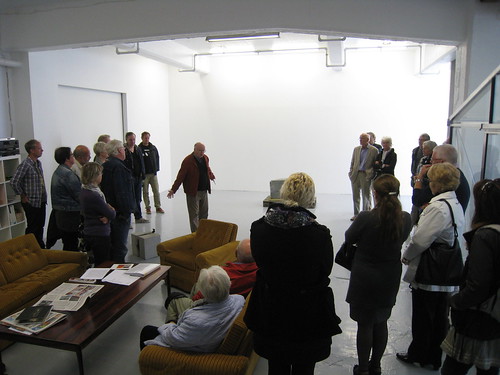Bettina Buck
11.5.-20.6.12
Galleri Opdahl Stavanger
Installations, video
Galleri Opdahl Stavanger opens again after some time in hibernation. With a new image with focus on information, availability and events. These are great news for Stavanger. The gallery chose Bettina Buck to be representing the re-opening. A great choice, as this symbolises both the high level and the interestingness Galleri Opdahl wants to present.
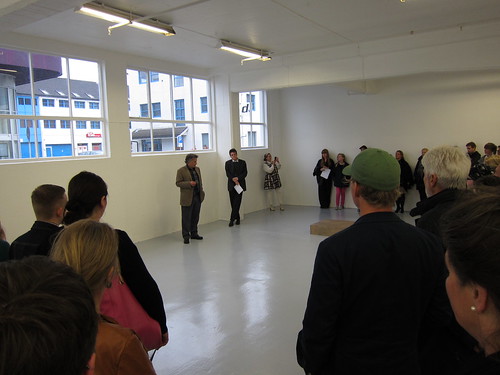
Opening talk
What I see is quite easy to describe. There is a bronze box, a stack of cardboard boxes, a bronze blurb, a stone on a layer of foam on a pallet, and a video of a woman pushing a large styrofoam block through nature. There is more to it than what appears at first, of course.
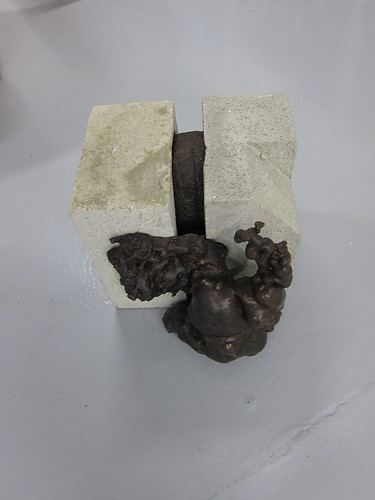
Swelling
This is made by casting in bronze a form originally emerged from expanding foam. The expansion is frozen, not only pressing its mould away but also emerging from it, creating its own form.

Pressed Foam
A large rock is placed on a wooden pallet. Between is set a layer of foam. Almost all of the stone, foam and pallet is visible, except the areas where they all meet. This is also what has the attention of the artist, thus the title. The pressure is something we will never experience, if you take the stone away to have a look, the pressure will disappear.
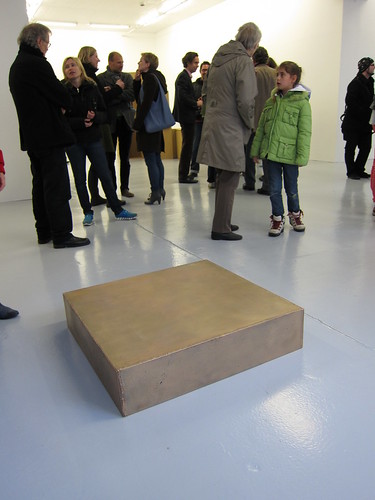
Age of Bronze
A pedestal of bronze, with welding marks on the outside, and casting marks on the inside, which are not visible. Instead of being just a feature lifting the artwork up from the ground, the pedestal becomes a sculpture itself. Also here are some features mentioned in the description, without being visible to the viewer, namely the casting marks inside. My thought is that if the pedestal becomes a sculpture, could it then be placed on a pedestal, and what would that look like?
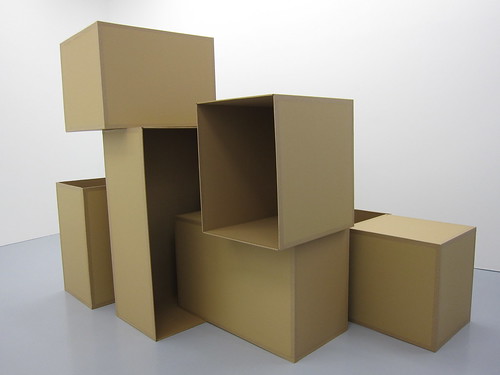
Plinth Drawings
This is not a pile of cardboard boxes, even it appears like it. This is rather cardboards taped together into rectangular shapes, containing nothing. The two components are depending on each other: Without the tape the cardboards would fall into one pile, and without the cardboard the tape would have no purpose. Had it been cardboard boxes, it would not have this dependency.
Plinth is a square base like in a flat pedestal. Which side of the shapes are the plinth, maybe each one? And can you really draw with them? Drawings are the results of the act of drawing. I am curious to how this plinth drawing process took place.
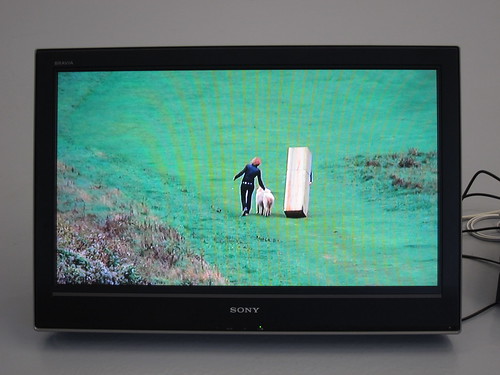
Interlude (video)
The video shows the artist carrying or getting help carrying a fridge-sized rectangular styrofoam piece along a cliff, over a meadow, through a forest. This seems like a never-ending and totally useless task, especially when the strong wind threatens to blow the styrofoam away. But on her journey she encounters the most spectacular and beautiful nature, and even meets some other living beings on her way. Maybe the task is not that meaningless after all. Instead of being a burden, can the styrofoam be an inspiration?
Part of the gallery's new image is also presentations of the exhibitions from different perspectives. I had the pleasure of experiencing art critic Trond Borgen presenting the exhibition from the art historian's point of view. A great event, and a great approach by the gallery.
